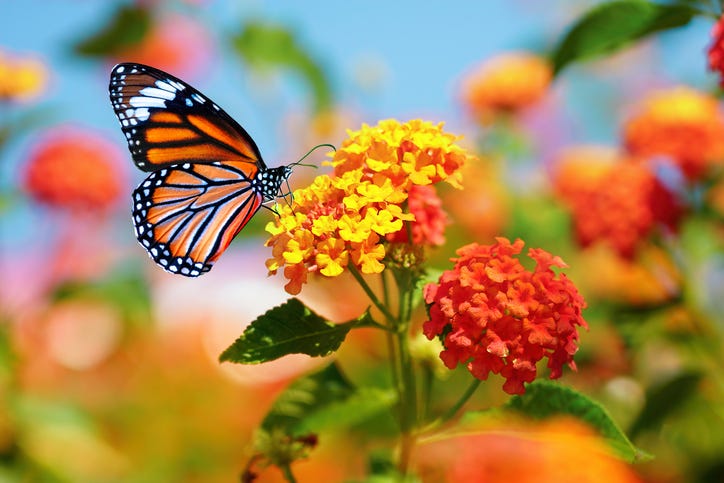
While most of us prefer to keep the bugs at bay, butterflies are among the most beautiful insects that we actually invite into our presence. Their colorful existence is not only mesmerizing, but the way they gracefully flutter through the air can be hypnotic.
Of course, butterflies transform from caterpillars -- but where did the charismatic beauties first originate? Researchers believe they've finally answered that question.
About 100 million years ago, a group of trendsetting moths started flying during the day rather than at night, taking advantage of nectar-rich flowers that had co-evolved with bees. This single event led to the evolution of all butterflies, according to the Florida Museum of Natural History. The insect group was thought to have evolved with plants and dispersed throughout the world in response to key geological events, with many researchers believing that butterflies originated somewhere in Asia.
A new study published in the journal Nature Ecology & Evolution is rewriting that origin story, with scientists now saying that the first butterflies originated in present-day western North America or Central America.
To reach their conclusion, researchers from dozens of countries created the world's largest butterfly tree of life, assembled with DNA from more than 2,000 species representing all butterfly families and 92% of genera. Using this framework as a guide, they traced the movements and feeding habits of butterflies through time in a four-dimensional puzzle that led back to North and Central America. According to their results, this is where the first butterflies took flight around 101.4 million years ago.
"This was a childhood dream of mine," lead author Akito Kawahara said in a statement. "It's also the most difficult study I've ever been a part of, and it took a massive effort from people all over the world to complete."
There are some 19,000 butterfly species, and piecing together the 100 million-year history of the group required information about their modern distributions and host plants. Prior to this study, there was no single place that researchers could go to access that type of data.
"In many cases, the information we needed existed in field guides that hadn't been digitized and were written in various languages," Kawahara said.
The authors decided to make their own publicly available database, painstakingly translating and transferring the contents of books, museum collections and isolated web pages into a single digital repository. Researchers also obtained tissue samples, captured and sequenced DNA from decades-old museum specimens, and obtained sequence data from hundreds of genomes.
The results tell a dynamic story — some butterfly groups traveled over impossibly vast distances while others seem to have stayed in one place, remaining stationary while continents, mountains and rivers moved around them.
According to the study, butterflies first appeared somewhere in Central and western North America. At the time, North America was bisected by an expansive seaway that split the continent in two, while present-day Mexico was joined in a long arc with the United States, Canada and Russia. North and South America hadn't yet joined via the Isthmus of Panama, but butterflies had little difficulty crossing the strait between them.
Butterflies took the long way around, moving into Asia across the Bering Land Bridge, and from there quickly covered ground, radiating into Southeast Asia, the Middle East and the Horn of Africa, according to the study. They even made it to India, which was then an isolated island, separated by miles of open sea on all sides.
The study says the arrival of butterflies in Australia, which remained sutured to Antarctica, the last combined remnant of the supercontinent Pangaea, was "astonishing." It's possible butterflies once lived in Antarctica when global temperatures were warmer, making their way across the continent's northern edge into Australia before the two landmasses separated.
Farther north, butterflies lingered on the edge of western Asia for potentially up to 45 million years before finally migrating into Europe, according to the study.
Once butterflies had become established, they quickly diversified alongside their plant hosts. By the time dinosaurs were snuffed out 66 million years ago, nearly all modern butterfly families had arrived on the scene, and each one seems to have had a special affinity for a specific group of plants, according to the study.
"We looked at this association over an evolutionary timescale, and in pretty much every family of butterflies, bean plants came out to be the ancestral hosts," Kawahara said. "This was true in the ancestor of all butterflies as well."
Researchers say the study not only reveals the history of butterflies, but it provides a robust baseline for future studies of model insect lineage.


